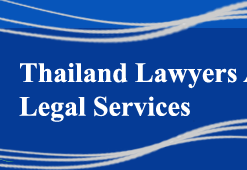



    |
|
| |
|
Open Regionalism and Deeper Integration: The Implementation of ASEAN Investment Area (AIA) and ASEAN Free Trade Area (AFTA)
Part 12
Consider from the models suggested by UNCTAD (discussed above), the AIA agreement may be considered to be a hybrid model, as it binds ASEAN member countries to grant mutual national treatment to ASEAN investors and then to extend NT to non-ASEAN investors later, by the year 2010. Mutual national treatment involves a greater commitment to full liberalisation among member states aiming at attaining regional integration, in order to offera larger geographical area within which globally competitive industries can be established. Under mutual national treatment, the right of entry and establishment are offered to investors located in member states that either possess the nationality of such state and/or are resident for business purpose in a member state. The aim is to establish a common regime for entry and admission for investors from member states (UNCTAD, 1999: 17). ASEAN countries also extend the combined NT/MFN treatment to ASEAN investors. This means ASEAN countries commit to offer each other NT and MFN treatment, whichever is more favourable to investors from any member country, at pre-entry and post-entry stages of investment. The aim is to widen entry and establishment rights as far as possible, to enable investors from other ASEAN countries to obtain the same rights of access as the national or most-favoured third country investor. Under AIA (Art. 8) "any preferential treatment granted under any existing or future agreements or arrangements to which a Member State is a party shall be extended on the Most-Favoured Nation basis to all Member States". Therefore, any advantages accorded to third parties, either under existing or future agreements will be extended to all ASEAN countries. However, any ASEAN country can confer special treatment or advantages to adjacent countries under growth triangles and other sub-regional arrangements between member states
(91), which need not be extended to others under the MFN requirement.Consequently, implementation of AIA based on mutual NT and combined NT/MFN treatment is enhancing intra-ASEAN liberalisation or regional integration while it encourages the inflow of foreign investment from outside the region. Therefore, a combined model is implemented in AIA: NT/MFN treatment is initially granted to ASEAN investors until the transitional period elapses, then NT is granted to non-ASEAN investors. This reflects the transitional approach in investment liberalisation of ASEAN, firstly prioritising intra-regional investment liberalisation, and later closer integration with the world.
ASEAN Investor
Central to this model is the definition of "ASEAN investor". The status of ASEAN investor enables such an investor to be entitled to immediate NT/MFN treatment. Under AIA Art.1, an ASEAN investor is defined as:
1) a national of a Member State; or
2) any juridical person of a Member State,
making an investment in another Member State, the effective ASEAN equity of which taken cumulatively with all other ASEAN equities fulfils at least the minimum percentage required to meet the national equity requirement and other equity requirements of domestic laws and published national policies, if any, of the host country in respect of that investment……….
For the purpose of this definition, equity of nationals or juridical persons of any Member State shall be deemed to be the equity of nationals or juridical persons of the host country:
"effective ASEAN equity" in respect of an investment in an ASEAN Member State means ultimate holding by nationals or juridical persons of ASEAN Member States in that investment……….
"juridical person" means any legal entity duly constituted or otherwise organised under the applicable law of a Member State,………….
"national" means a natural person having the citizenship of a Member State in accordance with its applicable laws.Therefore under AIA, a national or any juridical person of a member state who invests in any ASEAN country is regarded as an ASEAN investor. Since Art.1 refers to a juridical person constituted in a member country, it is not limited to locally-owned entities. Thus, it does not exclude non-ASEAN investors who have formed a company in a member country, and they may be entitled to "ASEAN investor" status, provided it also meets the conditions for "effective ASEAN equity" on a cumulative basis. If Art.1 intended to exclude foreign-owned companies from the meaning of "juridical person of a member state", it should be clearly defined as "an ASEAN national juridical person", just like definitions in national investment laws which make a distinction between foreign-owned companies and national companies
(92). Accordingly, this definition of "ASEAN investor" enables any company legally formed in any ASEAN country to be regarded as an ASEAN investor and entitled to NT/MFN treatment under AIA. For instance, a foreign-owned company duly constituted in Singapore may be entitled to the status of ASEAN investor and hence to benefit from both NT and MFN treatment. Consequently, the AIA provisions also indirectly encourage individual ASEAN countries to lower their national equity requirement or to eliminate discrimination between national and foreign investors at national level.However, it needs to be made clear here that national equity requirements are also relevant to the existing national negative list, as a foreign-owned company (classified by its foreign-owned equity) cannot access certain industries that are closed to foreigners. Thus foreign-owned companies are still subject to the negative lists of each ASEAN country that are still allowed under AIA.
Nevertheless, for an ASEAN juridical person to be entitled to NT as an "ASEAN investor" it must also meet the requirements of "effective ASEAN equity". This enables it to comply with the local equity requirements of any ASEAN member country by counting the local equity participation in all other ASEAN countries on a cumulative basis towards that local requirement. The definition refers to "ultimate holdings", this means that indirect holdings in related entities can be included in the cumulative total
(93). For example, if a hypothetical US company Computech has a Singapore subsidiary with local Singapore investors owning 10%, it would need only an additional 40% of local shareholdings to meet the requirement in Malaysia for 50% local equity; and then only further 1% to meet the Thai minimum of 51%._______________________________________________________________
(91)Art. 8 (4) "Nothing in paragraph 1 shall prevent any Member State from conferring special treatment or advantages to adjacent countries under growth triangles and other sub-regional arrangements between Member States".
(92)For instance, Malaysian law defines a company as a foreign company or non-resident company where 50% or more of its paid up capital is held by non-residents; or it is branch of a company which is incorporated outside Malaysia; or the majority shareholding is held by residents but the ultimate right of control is held by non-residents. Under Thai Law, foreign company means a juristic person of which half or more of the capital is owned by aliens; a juristic person of which half or more of the shareholders, partners or members are aliens, irrespective of the amount invested by such aliens; a limited partnership or registered ordinary partnership of which its managing partner or manager is an alien. Under Indonesian law, investment where foreign investor is directly bears the risk of the investment is foreign investment. Also under the Philippines law, if a company or juristic person that foreign shareholders, partners that own more than 41% equity will be regarded as a foreign entity. Only under Singapore law is there no definition of foreign investor.
(93)A technical issue could be made of the term "ultimate holding" if the entities formed in ASEAN are all subsidiaries of a non-ASEAN entity, so that local investors in one have no "ultimate holding" in another. To avoid doubt, they could be structured as sub-subsidiaries.